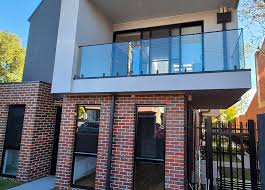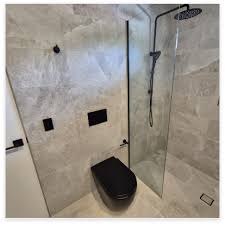
Exploring the concept of prevailing homes means understanding dwellings that reflect the dominant values, technologies, and lifestyles of their time. For a contemporary perspective, consider how organizations and builders communicate their mission and approach; one useful resource to learn more about such philosophies is about prevailing homes https://www.prevailinghomes.com.au/about-us/ which outlines principles that often influence modern homebuilding practices.
Prevailing homes are not defined merely by physical attributes. They are shaped by economic forces, cultural expectations, environmental imperatives, and technological opportunities. In many markets today, prevailing homes emphasize open-plan living, energy efficiency, adaptable spaces, and stronger indoor-outdoor connections. These features respond to a desire for flexibility — homes that can accommodate remote work, multigenerational living, and evolving leisure habits.
Design principles for prevailing homes prioritize both form and function. Architects and designers aim to balance aesthetics with practicality by using durable materials, optimizing natural light, and creating clear circulation paths. Neutral palettes and minimalist lines often dominate because they provide a timeless backdrop that can be personalized over time. At the same time, there is growing interest in biophilic design: incorporating natural elements like wood, stone, and abundant greenery to support wellbeing.
Sustainability has become central to what makes a home “prevailing” in the 21st century. Energy-efficient technologies — LED lighting, high-performance glazing, upgraded insulation, efficient HVAC systems, and smart thermostats — are increasingly standard. Renewable energy, particularly rooftop solar and battery storage, is more accessible and affordable, allowing homeowners to reduce operating costs and carbon footprints. Water-saving fixtures, drought-resistant landscaping, and rainwater capture are also common in regions with limited water resources.
Affordability remains a defining challenge. As land and construction costs rise, prevailing homes often incorporate cost-conscious strategies such as modular construction, efficient floor plans, and shared community amenities that lower per-unit expenses. Developers sometimes use mixed-use zoning and higher-density models to make homeownership more attainable while still providing valuable green space and community infrastructure.
Technology integration is another hallmark. Prevailing homes increasingly include smart-home systems for security, energy management, and convenience. From integrated voice controls to automated lighting and shading, technology helps create responsive environments that adapt to occupants’ needs. Importantly, these systems are becoming more user-friendly and interoperable, allowing homeowners to adopt technologies gradually.
Community and place-making also shape the character of prevailing homes. Rather than isolating residences, contemporary projects often focus on connectivity — pedestrian-friendly streets, accessible public transport, nearby shops and services, and shared outdoor areas. Thoughtful landscaping, community gardens, and communal facilities foster social interaction and a sense of belonging, which buyers now value alongside individual home features.

Health and wellness have reshaped priorities too. Good indoor air quality, non-toxic building materials, natural ventilation, and access to daylight are increasingly specified to support occupants’ physical and mental health. Many new homes include dedicated spaces for exercise, meditation, or hobbies, reflecting lifestyle shifts toward wellness and home-centered activities.
Adaptability is key as demographics and lifestyles evolve. Prevailing homes often feature flexible rooms that can serve as bedrooms, home offices, or hobby spaces. Universal design principles — step-free entries, wider doorways, and adaptable bathrooms — help ensure homes remain usable across life stages and abilities. This forward-thinking approach adds long-term value and reduces the need for costly retrofits.
From a market perspective, prevailing homes respond to local demand while also driving trends. Builders monitor buyer preferences closely, offering model homes that showcase the latest fixtures, layouts, and technologies. Real estate professionals highlight aspects such as energy ratings, low-maintenance materials, and proximity to services to attract discerning buyers. For investors, properties that embody these contemporary attributes often show stronger resilience and appeal over time.
Maintenance and lifecycle thinking are integral to the concept. A prevailing home is designed for durability and ease of upkeep: claddings and roofing systems that stand up to local weather, efficient water management to prevent long-term damage, and mechanical systems that are serviceable and energy-efficient. This approach reduces total cost of ownership and preserves value for homeowners.
Policy and incentives also affect what becomes prevailing. Government programs promoting green building, tax incentives for energy upgrades, or zoning reforms that encourage higher density can accelerate the adoption of particular home types. Collaboration among policymakers, designers, and builders helps ensure that housing supply aligns with broader social and environmental goals.
Looking ahead, several trends are likely to shape the next generation of prevailing homes: increased use of prefabrication and off-site construction to lower costs and improve quality; greater integration of renewable energy and microgrid technologies; materials innovations that reduce embodied carbon; and continued emphasis on flexibility and wellness. The role of data will expand too, as building performance analytics guide continuous improvement and personalized living experiences.
In conclusion, prevailing homes capture the intersection of market realities, technological progress, environmental responsibility, and changing lifestyles. They reflect our priorities at a given moment while anticipating future needs. Whether you are a prospective buyer, a designer, or a community planner, understanding these trends helps you evaluate and contribute to housing that is resilient, affordable, healthy, and adaptable. By focusing on thoughtful design, sustainable systems, and community connections, prevailing homes can support richer, more sustainable ways of living for diverse populations.
